Edmund Lyon Memorial Lectureship Series


Edmund Lyon Memorial Lectureship Series
Past Speakers
2011 - Jane K. Fernandes, Ph.D.
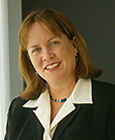 |
Jane Kelleher Fernandes joined UNC Asheville as Provost and Vice Chancellor for Academic Affairs in July 2008. As an academic leader and educator of national prominence, her life's work—creating inclusive academic excellence in education at all levels—has taken her from Hawaii to the Atlantic seaboard. She earned a Master's degree and a Ph.D. in Comparative Literature from the University of Iowa. Her undergraduate degree is in French and Comparative Literature from Trinity College in Hartford, Conn. Her scholarship and service have been dedicated to fostering bilingual American Sign Language-English literacy in all deaf students, promoting interdisciplinary teaching and learning practices, and advocating for racial justice. She fosters the development of inclusive schools of racial justice where every student, regardless of circumstances, is welcome and educated respectfully to the maximum positive outcome. In addition to her position as Provost, Dr. Fernandes is a tenured professor of education at UNC Asheville and serves as a Senior Fellow with the Johnnetta B. Cole Global Diversity & Inclusion Institute, founded at Bennett College for Women in Greensboro, N.C.
|
Show/hide presentation information...
Presentation Info
Inclusive Deaf Studies: Barriers and Pathways
April 7, 2011, 7:00pm
Student Development Center (Bldg. 55), Rm. 1300/1310
The presentation will focus on the need for new scholarly directions in Deaf Studies and will outline ways to expand the field. Currently, American Deaf Studies continues the focus of founding scholarship on native White American Sign Language users. This has privileged information and knowledge about this group of people at the expense of scholarship and knowledge about deaf people with different language backgrounds, races or ethnicities and other diverse attributes. The presentation will discuss the development of an interdisciplinary lens to research and understand the many ways deaf people live. The continued marginalization of academic study of less privileged people within the deaf community will impede knowledge and render Deaf Studies unsustainable as an academic field. The presentation will recommend that Deaf Studies scholars embrace a more expansive, nuanced, and interdisciplinary approach that encompasses the full variety of deaf lives and identities.
Recommended advance readings:
Fernandes, J. & S. Myers. (2010). “Inclusive Deaf Studies: Barriers and Pathways.” Journal of Deaf Studies and Deaf Education. 15(1): 17-29. http://jdsde.oxfordjournals.org/cgi/reprint/enp018v1?ijkey=mUM9jICc8VUYCeF&keytype=ref
Myers, S. & Fernandes, J. (2010). “Deaf Studies: A Critique of the Predominant U.S. Theoretical Direction.” Journal of Deaf Studies and Deaf Education. 15(1): 30-49. http://jdsde.oxfordjournals.org/cgi/reprint/enp017?ijkey=KJ5Oxy3kfQaDU40&keytype=ref
2010 - Tom Humphries, Ph.D.
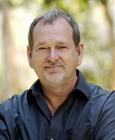 |
Tom Humphries is an Associate Professor in Education Studies and the Department of Communication at the University of California, San Diego. He is Associate Director of Education Studies. One strand of his current work focuses on how “talking culture” among Deaf people in recent history informs our understanding of cultural processes and how meaning circulates. In addition, he has developed an experimental ASL-English Bilingual Education training curriculum which trains teachers to work with deaf children using an entirely new curriculum construct: the application of bilingual teaching practices to classrooms of deaf children. Dr. Humphries has published two widely used ASL textbooks, Learning American Sign Language (Allyn & Bacon, 2004) and A Basic Course in American Sign Language (TJ Publishers, 1980). He is co-author (with Carol Padden) of Deaf in America: Voices from a Culture (1988) and Inside Deaf Culture (2006), both from Harvard University Press.
|
Show/hide presentation information...
Presentation Info
Deaf Identity Discourse: Some Theoretical Frames
December 16, 2010, 7:00pm
Student Development Center (Bldg. 55), Rm. 1300/1310
How can we understand the complicated and often contested ways of defining what it means to be Deaf? The processes of deaf identity construction are not unique phenomena but echo the experience of other embedded cultural groups, particularly those that are stressed by the assertion of hegemony over them by others. Theorists Jose Marti and W.E.B. DuBois, who struggled with similar issues, offer us ways to think about the complicated discourses of DEAF and the local social histories in which DEAF is constructed.
Recommended advance readings:
Padden, C. & T. Humphries. (2005). Inside Deaf Culture. Cambridge, MA: Harvard University Press.
Humphries, T. (2001). “On Deaf-mutes, the Strange, and the Modern Deaf Self,” in Culturally Affirming Psychotherapy with Deaf Persons, N. Glickman and M. Harvey, eds., Hillsdale, NJ: Lawrence Erlbaum Associates, 1996. Reprinted in Deaf World: A Historical Reader and Primary Sourcebook, Lois Bragg, Ed. New York: New York University Press.
Humphries, T. (2008). “Scientific explanation and other performance acts in the re-organization of DEAF.” In Signs and Voices, Lindgren, DeLuca & Napoli, eds. Gallaudet University Press.
2010 - Brenda Jo Brueggemann, Ph.D.
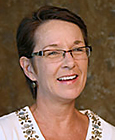 |
Dr. Brenda Jo Brueggemann is Professor of English at The Ohio State University where she coordinates the Disability Studies program, serves as a Faculty Leader for the American Sign Language program, and also administrates as the Vice-Chair of the English Department, overseeing the Rhetoric, Composition and Literacy (RCL) Program. She has authored or edited 8 books and has published over 40 articles or essays in Deaf Studies or Disability Studies. Her most recent book is Deaf Subjects: Between Identities and Spaces (New York UP, 2008). She is currently the co-editor of Disability Studies Quarterly.
|
Show/hide presentation information...
Presentation Info
The Tango: What Deaf Studies and Disability Studies Do
Mar 11, 2010, 7:00pm TBA at NTID/RIT
Dr. Brueggemann's 2009-2010 lecture was on a theoretical and practical framework for outlining the similar and different work that Disability Studies and Deaf Studies do. She focused on three areas of their doing: the "locations"(disciplinary alliances) of their "study"; the "focus points" of their (current) study/ies; and the "key constructs" that comprise each area of study. Although she suggested that Disability Studies and Deaf Studies remain different bodies, she also indicated how, especially in the last decade, they have often been dancing together in exciting, provocative, colorful steps.
'The Tango' (https://www.rit.edu/ntid/sites/rit.edu.ntid/files/lyon/The_Tango.doc)
Brenda's PowerPoint (https://www.rit.edu/ntid/sites/rit.edu.ntid/files/lyon/The_Tango_ppt.pdf)
2010 - Henry Kisor, M.S.J.
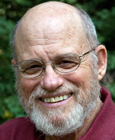 |
Mr. Henry Kisor retired as book review editor of the Chicago Sun-Times June 2006 after 42 years as a journalist with major metropolitan newspapers. He became profoundly deaf at age 3 1/2 from meningitis and was orally mainstreamed from kindergarten through high school and college (Trinity College, Connecticut). He holds an M.S. degree in Journalism from Northwestern University. He is the author of six books, all issued by commercial New York publishers, including What's That Pig Outdoors: A Memoir of Deafness (published in 1990; to be reissued in a new edition by the University of Illinois Press in 2010), and continues to write a series of mystery novels set in the Upper Peninsula of Michigan.
|
Show/hide presentation information...
Presentation Info
Writing in the Mainstream: A Deaf Perspective
Jan 14, 2010, 7:00pm
CSD/SDC 1300 Building 55 at NTID/RIT
In 1990 Mr. Henry Kisor, at age 50, published his memoir of deafness, What's That Pig Outdoors? The wide reception from critics and readers changed his life, turning him from a diffident wallflower into a confident public speaker and leading to five more books, three of them novels. Along the way he developed new understanding of what it has meant to be a deaf writer and editor in mainstream America during the last 20 years, some of it heartening and some of it discouraging - and all of it amenable to professional coping strategies, some of which he shared in his 2009-2010 lecture. How can one make one's writing appeal to the ear as well as the mind and address it to specific audiences? This workshop discussed sophisticated as well as general audiences and how to approach them. It also offered tips with a few exercises.
2009 - Christopher Krentz, Ph.D.
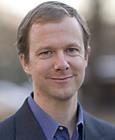 |
Dr. Christopher Krentz is associate professor of English and ASL and director of the American Sign Language Program at the University of Virginia. He is author of Writing Deafness: The Hearing Line in Nineteenth-Century American Literature (University of North Carolina Press, 2007) and editor of A Mighty Change: An Anthology of Deaf American Writing, 1816-1864 (Gallaudet University Press, 2000). He has published articles on deafness and disability in literature and culture. Dr. Krentz helped to found the American Sign Language Program at the University of Virginia. Although he began slowly losing his hearing at age nine, Krentz had little contact with the signing Deaf community until age 23, when he got a job at Gallaudet University. There he began learning ASL and proudly identifying with Deaf culture.
|
Show/hide presentation information...
Presentation Info
Writing Deaf Identity in Nineteenth-Century America
Oct 29, 2009, 7:00pm
Robert F. Panara Theatre
NTID/RIT
Like other minorities, in the early nineteenth century deaf Americans challenged prevailing assumptions about their identities through the written word. Deaf authors like Laurent Clerc, John Carlin, and John J. Flournoy turned to writing to prove their reason and humanity to the hearing majority. They also used written English to communicate with each other when they were separated by time or space. Dr. Krentz's 2009-2010 lecture explored this rich, complex deaf writing and offered insight into the development of deaf consciousness and pride in antebellum America. What does written English have to do with the advancement of deaf people? What is the relationship between English and ASL, and how is English part of American Deaf culture? This 2009-2010 workshop began with some examples of the power of deaf writing in American history, which led to a discussion of writing, deaf pride, and deaf potential.
2004 - David Pierce
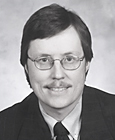 |
From Lewiston, New York, David Pierce graduated from RIT in 1988 from the New Media program. Pierce has spent over 20 years in the television production industry and has worked as a producer, director, videographer, production coordinator, and programmer. At the time of his Lyon Memorial Lectureship presentation, Pierce had recently re-launched his own production company and was also the president of the NTID Alumni Association. Pierce was selected for the lectureship series in view of his diverse work history and active involvement in television production.
|
Presentation Info: not available
2002 - Nancy Oyos Rourke
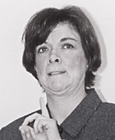 |
Nancy Oyos Rourke was raised in San Diego, California. After high school she attended NTID/RIT. She was a cross-registered student in RIT's College of Imaging Arts and Sciences with a graphic design major and a painting/illustration minor. Rourke continued on to earn her Master of Fine Arts degree in computer graphics design from RIT. She has worked for Xerox, IBM, and Microsoft. Rourke's Lyon lecture covered the topic, "Succeeding in the Competitive Workplace."
|
Presentation Info: not available
1999 - James Macfadden
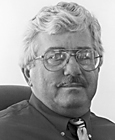 |
Born hard of hearing in Hollywood, California, James "Jim" Macfadden attended hearing schools throughout his primary and secondary education and relied on lip reading. After high school, Macfadden attended Gallaudet College, where he majored in economics. Upon graduation in 1962, Macfadden was employed as a computer programmer and moved up the career ladder to eventually become a division manager. In 1986, Macfadden started his own company that provided computer services and consulting.
|
Presentation Info: not available
1997 - Jelica Bruer Nuccio
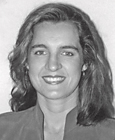 |
Born in Croatia, Jelica Nuccio moved to Alabama as a child. There, her parents enrolled her in the Alabama School for the Deaf. Nuccio's parents disliked having their daughter communicate in ASL, a language they did not understand, so they sent her to the St. Joseph Institute for the Deaf in St. Louis for oral training and later to a mainstream high school. Following high school, Nuccio went on to RIT, where she received her bachelor's degree in biology, and then to Emory University, where she earned a master's degree in behavioral services and health education. At the time of her Lyon lecture, Nuccio was a cryogenic technologist at the Emory Genetic Laboratory as well as a project officer for the Centers of Disease Control. Her Lyon lecture was titled "Breaking Barriers: Trailblazing in the Scientific Field."
|
Presentation Info: not available
1995 - Raymond Conrad
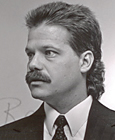 |
Raymond "Ray" Conrad earned a bachelor's degree from RIT in business administration in 1981. He went on to the University of Maryland, where he completed graduate studies in Management Information Systems and then received an MBA degree. In 1995, when Conrad was invited to present for the Edmund Lyon Memorial Lectureship series, he was an office technology consultant for Hewlett-Packard. Conrad was a chairperson of Hewlett-Packard's deaf and hard-of-hearing employee network and is a strong advocate for barrier-free work environments.
|
Presentation Info: not available

